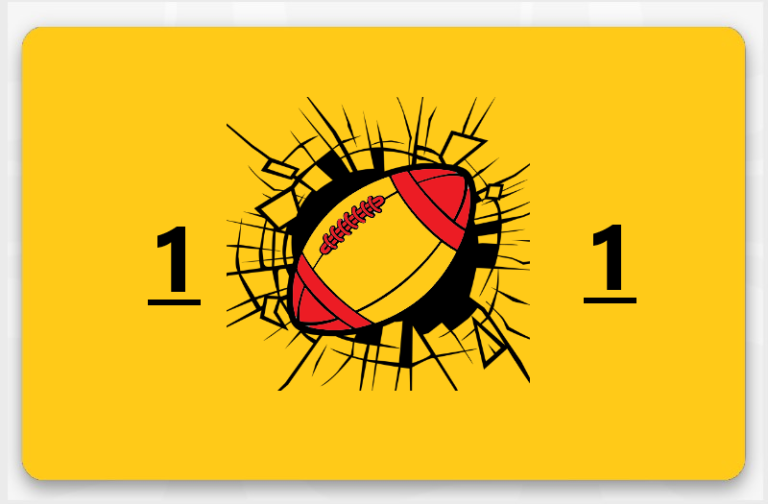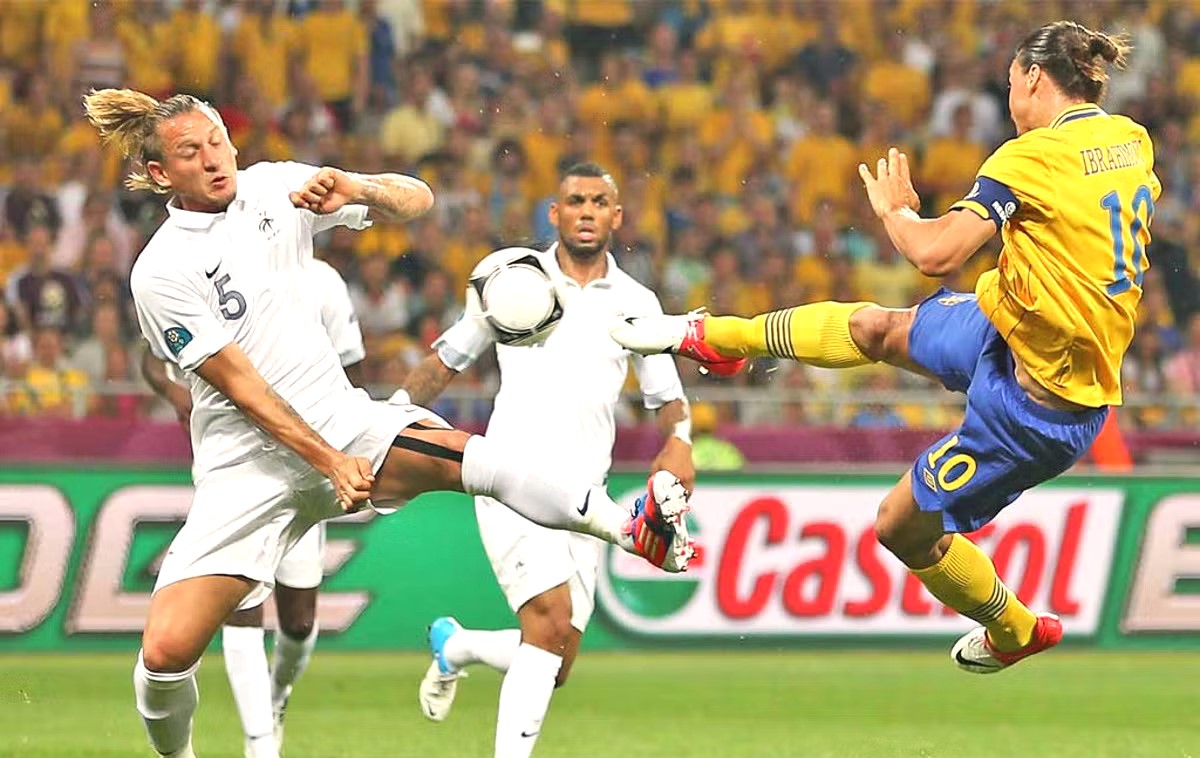
In the realm of sports betting, betting on a draw is a common approach. A “draw” refers to a game or match that ends in a tie rather than a victory for one side or player. Although betting on a draw is not as easy as betting on a clear winner, it may be profitable if executed properly. This article will cover the ins and outs of betting on a draw, including suggestions and techniques to improve your chances of winning. Whether you’re a seasoned gambler or a newcomer to the game, this guide will help you make informed selections when putting bets on draws.
What Are Draw Bets?
A draw bet is a sort of wager in which the bettor anticipates that the result of a certain event will be a tie or draw rather than one of the possible outcomes. In sports like soccer, where a considerable proportion of matches result in a tie, it is standard practice for bettors to place their money on a tie outcome.
In these situations, the bettor comes out ahead if the game finishes in a tie, but the bookmaker or sportsbook is responsible for paying out winnings if the game is decided in favor of one team. Draw bets can also be employed in other sports and events, such as hockey and horse racing, where a tie or draw is a conceivable result.

For example, a draw is a possible outcome in both of those activities.
Bettors who are unclear of the outcome of a specific event but have a hunch that it could finish in a draw may find that a draw bet provides them with a decent choice to consider.
Predicting draws in sports may be difficult since it takes a comprehensive understanding of the teams or players involved, as well as the sport itself. There are, however, tactics and procedures that may be employed to boost the likelihood of properly forecasting draws.
How To Predict Draws?
Examine the teams:
Analyze the previous results of the teams, including their win-loss records, number of draws, and playing styles. These teams are more likely to play to a draw if they prefer to play defensively or have a balanced style of play.
Examine the odds:
Compare the odds provided by several bookies or sportsbooks for a certain match. If the chances for a draw are high, bookmakers may assume that a draw is likely.
Look for key players:
Injuries or bans of important players can significantly impact a team’s performance and enhance the likelihood of a draw.
Check the weather:
Weather conditions can sometimes play a significant effect in determining the outcome of a game. For instance, if a match is played in poor weather, the sides may adopt a more cautious and defensive strategy, ending in a draw.
Use statistics:
Predict the outcome of the match by using data, such as the teams’ average number of goals scored and conceded each match, their head-to-head record, and their overall form.
Noting that forecasting draws is not a perfect science and that there is always an element of uncertainty is essential. These tactics can raise the likelihood of properly forecasting draws, but there is no assurance that they will do so.

Statistics are available on the official websites of the tournaments
The Probability of Draws in Football
Depending on several variables, the likelihood of a football draw might vary. However, 25-30% of football draw matches result in a tie on average. This is based on data from the English Premier League, La Liga, and the Bundesliga, among other international football leagues.
Numerous variables can influence the likelihood of a draw in a football match, including the talent level of the sides, the style of play, and the quality of the players. A match between two evenly matched teams, for instance, is more likely to end in a tie than a match between a strong squad and a lesser side.
Furthermore, certain leagues have a greater proportion of 3 sure draws than others. For example, the Italian Serie A is noted for having more draws than other major leagues.
During a match, the chance of a draw can also alter. For instance, if a team gains an early lead, they may be more likely to play defensively, increasing the likelihood of a tie.
Despite the difficulty of pool draw prediction the outcome of a football match, the average probability of a draw is between 25 and 30 percent, according to data from major football leagues. However, it can change according to the teams, league, and circumstances of the match.
‘Draw No Bet’
Draw No Bet is a sort of wager in which the bettor can wager on one team to win and receive a refund if the match ends in a tie. This form of wager is favored by people who wish to eliminate the danger of losing their wager in the event of a tie.
In this wager, the odds for the winning team are decreased to account for the likelihood of a tie. This means that the potential return is lower than with a standard wager on a team to win, but the danger of losing the wager is lowered.
When the odds for a team to win are low and the likelihood of a draw is high, “Draw No Bet” is frequently utilized. For instance, if you anticipate that a match between two evenly matched teams will likely result in a tie but you still want to bet on one team to win, “Draw No Bet” is a smart alternative.

It is also crucial to note that “Draw No Bet” can be utilized in other sports where a draw is a conceivable result, such as hockey and baseball.
Generally speaking, “Draw No Bet” is a form of wager in which the bettor can wager on one team to win and has the opportunity to earn a refund if the match ends in a draw.
It’s a popular option for individuals who wish to prevent the risk of losing their wager if the match finishes in a tie, and it’s typically employed when the odds for a side to win are low and the probability of a draw is high.
Draw Betting Systems Ranked
Numerous draw betting techniques can boost the likelihood of successfully forecasting best draws in sports. Here are many of the most common draw bet methods, listed in no particular order:
- Draw-Win Draw-Loss System: This system entails wagering on a draw as the primary outcome while simultaneously placing smaller wagers on the prospective winning team. This approach allows bettors to take advantage of the greater odds for a draw while decreasing their risk of losing their wager if one of the sides wins.
- Draw-Draw System: This system involves wagering on the draw as the primary outcome and then making lesser wagers on the draw in various markets, such as half-time/full-time or correct score. This strategy enables gamblers to boost their chances of winning by wagering on the draw across various markets.
- Draw-Chase System: This system entails wagering on a draw as the primary outcome and raising the quantity of the wager if the match ends in a draw. This technique allows bettors to take advantage of the greater odds for a draw, as well as the chance to earn a larger profit if the match ends in a tie.
- Draw-Fade System: This system entails betting against the draw as the primary outcome and reducing the quantity of the wager if the match ends in a draw. This approach allows bettors to take advantage of the greater odds for a win while decreasing their chance of losing if the match ends in a tie.
It is essential to remember that no betting technique can guarantee a win, and you should always manage your bankroll and wager within your means. Each strategy has its advantages and disadvantages, so it is essential to do your homework and choose the one that fits your betting style and risk tolerance the best.
Tips & Tricks for a Good Tie Betting Strategy
Here are some bet draw tips and tricks for a successful tie betting strategy:
- Consider teams with a history of playing to a draw. Examine the teams and seek those who are likely to play to a draw. This may be the result of a lack of scoring ability, a stout defense, or a balanced approach to the game.
- Pay close attention to the officials, as they have a significant impact on the game. Some referees are more inclined to allow play to continue after a foul, whereas others are more likely to sound the whistle. Knowing the referees’ styles can provide insight into how the game will be played and the likelihood of a tie.
- Take note of the changes in odds. Check the odds supplied by several bookies or sportsbooks for a specific match; if the odds for a tie are trending in a particular way, it may indicate that bookmakers believe a tie is a possible conclusion.
- Focus on the underdog. Often, the underdog side is more motivated to play for a tie, as it may be viewed as a favorable result.
- Examine the recent performances of the teams to determine if they have been performing well or poorly. A team in poor form may be more inclined to settle for a tie, whilst a squad in strong form may be more likely to fight for a victory.
- Consider the tactical strategy of the teams. Some have a more defensive approach and prioritize avoiding losing the game, while others have an offensive style and prioritize winning the game. Knowing each team’s tactical strategy can provide insight into the likelihood of a draw.
- Matches with little scoring potential are more likely to result in a draw, so focus on games involving teams with strong defenses or those that struggle to score.
Remember that betting on ties is not a precise science, and there is always an element of unpredictability. These strategies can raise the likelihood of properly predicting ties, but they are not a certainty. Additionally, it is essential to control your bankroll and wager within your means.

Draw Betting – Popular Sports
When a tie or draw is a potential conclusion in a variety of sports, draw betting is a popular alternative. Here are some instances of popular sports where draw wagering is prevalent:
- Football. Football is one of the most popular sports for draw betting, as a considerable percentage of matches end in a tie. This is especially true in leagues where clubs are evenly matched, making it difficult to determine a clear winner.
- Horse racing. Due to the difficulty in predicting the outcome of a horse race, horse racing is another popular draws betting activity. This is especially true in races with a large number of horses, where the likelihood of a tie is greater.
- Ice hockey. Ice hockey is another popular sport for draw wagering, as the low-scoring aspect of the game makes ties more often. In addition, the sudden-death overtime structure utilized by several leagues can enhance the likelihood of a draw.
- Basketball. In basketball, it is uncommon for a game to end in a tie, however, there are scenarios in which the game ends in a tie after regulation, and a draw is a wagering option.
- American Football. American Football can also result in a tie, but it is less common than in the other sports listed.
Other games where a tie or draw is a potential conclusion, such as rugby, baseball, and volleyball, are also eligible for draw betting. Always remember to conduct research, analyze the teams, and monitor the odds to maximize your chances of winning a draw bet.
Is it worth betting on a draw?
Whether or whether it is worthwhile to wager on a draw relies on a variety of circumstances and personal choices. Those who anticipate a match will result in a draw but are unsure of which team will prevail may find draw betting to be a viable alternative. Typically, the chances for a draw are greater than those for a win or defeat, which means the potential payout can be greater. However, it is also essential to examine the probability of a draw and compare it to the odds offered.
One of the benefits of draw betting is that it might be less dangerous than betting on a certain team to win because the bettor can hedge their bets and receive a return if the match ends in a draw. This is particularly effective when the match is evenly balanced and the likelihood of a draw is high.
On the other hand, it is crucial to remember that the likelihood of a draw is typically smaller than that of a win or a defeat, thus it might be difficult to anticipate.
Due to the lesser probability, the odds for a draw tend to be greater, resulting in a lower possible payoff than a standard wager on a team to win.
In summary, whether it is worthwhile to wager on a draw or not depends on the match’s conditions and the odds given. It can be a smart alternative for those who anticipate a match will result in a draw and wish to hedge their bets, but it’s crucial to analyze the probability of a draw and compare it to the odds being given. Always manage your money and wager within your financial limits.
FAQ
To wager on a soccer or football draw, you must choose a bookie or sportsbook that offers draw wagering options. Then, you may wager on the possibility that the match will conclude in a tie. The odds for a draw will be displayed, and if the match ends in a draw, your wager will be paid out according to the odds.
If the match concludes in a tie, the bettor who wagered on a tie will win according to the odds set by the bookmaker. If the game does not result in a tie, the person who bet on draws will forfeit their wager.
The odds for a draw vary based on the bookmaker or sportsbook, the specific match, and the teams involved. As the chance of a draw is typically lower than that of a victory or a loss, the odds for a draw are typically greater than those for a win or a loss. Always analyze the chances provided by various bookmakers or sportsbooks to discover the best odds for a draw.
Those who anticipate a match will result in a tie but are unsure of which team will prevail, may find it advantageous to wager on best draws. It is also less hazardous than betting on a certain team to win because the bettor can hedge their bets and obtain a return if the match ends in a tie.
Last updated on 29 Jan 2023 - 20:23
















